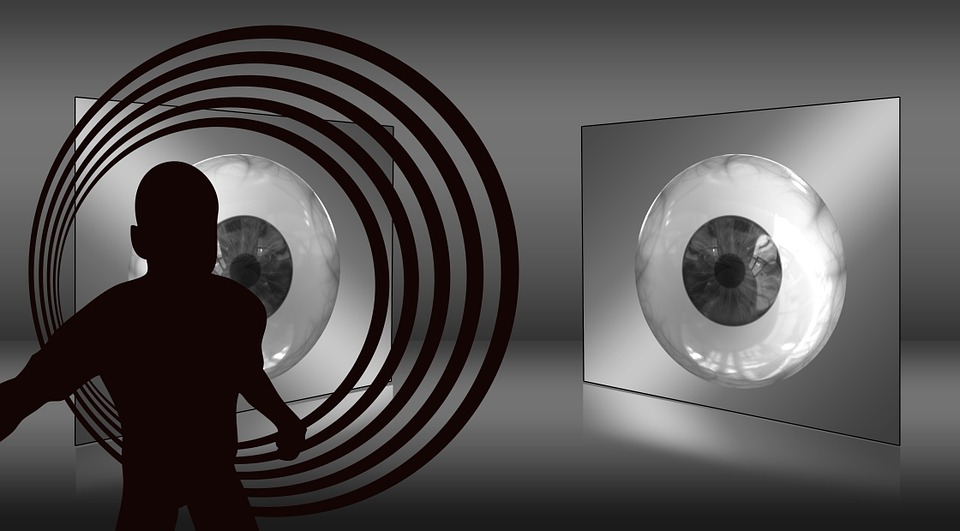Weber’s Law of Sensation And Perception In Psychology have contributed much in the understanding of human behavior. Weber , a professor of anatomy and physiology at the University of Leipzig, was the first to make an extensive study of sensation as it relates to behavior.
His discoveries about the skin and muscle senses have become famous.He placed one hand in a bowl of hot water, the other in a bowl of cold water, then both in lukewarm water. In the lukewarm water the first hand felt cold, the second hot. From this he concluded that the sensation of cold results from a drop in skin temperature, while hot results from a rise. The theory holds for moderate, though not extreme temperatures. Weber distinguished between the sense of touch, whose receptors (end-organs for receiving stimuli) lie in the skin, and the muscle sense whose nerve endings lie within the body. That the anesthetic or muscle sense is important he showed by demonstrating how much more accurately subjects can judge weights when they “ heft” them than when the weights are merely placed on the skin surface.
Weber is best known for initiating “ psycho-physics” (a name applied later), which deals with the cause-effect relation between physical stimuli and resulting sensations. Particularly he wanted to know how much a given stimulus must be increased or decreased to bring about a “ just noticeable difference.” With lifted weights Weber found that an increase of about 1 /30 can be just barely felt, on the average. Thirty ounces can be distinguished from 29, as can 15 from 14/2- The ratio remains constant. In judging lengths of lines the ratio is 1/ 10 0 ; a line 10 1 mm. in length is judged longer than one of 100 mm. This principle that we notice relative rather than absolute changes in stimuli later was called “ Weber’s Law .”
Weber’s Law of Sensation And Perception In Psychology Between Mind And Body
A colleague o f Weber, G u s t a v T h e o d o r F e g h n e r , a professor of physics at Leipzig, tried to bridge the gap between mind and body. In Weber’s work he saw possibilities for discovering a mathematical relationship between the mental and the physical.
Weber Fechner Law
After years of labor he gave the world a significant but difficult book called Elements of Psychophysics. Its value lies mainly in presenting ingenious methods of testing sensitivity thresholds.The methods have been used ever since to devise aptitude tests and other measures of individual differences. In his experiments Fechner used lifted weights, light intensities, and various factual and visual situations. His conclusions elaborated Weber’s Law thus: “ When stimuli increase by a constant ratio, the sensations aroused by them increase by equal increments or steps.” As
Stimuli increase in geometrical ratio, sensations follow in arithmetical ratio, that is, by one sensation unit or “ just noticeable difference.”Though Fechner law made numerous valuable contributions, he failed to span the chasm between mind and body, a feat which remains for some super-scientist of the future.
Ewald Hering, a professor of physiology at Prague, modified Weber’s theory for warm and cold sensations. The skin of a hand placed in cold water adapts to the water temperature, Hering said. Any stimulus warmer than the newly established skin temperature is felt as warm, though actually it may be cold. Likewise anything lower in temperature is experienced as cold. Hering thus dismissed the notion of an absolute zero and substituted a relative zero point dependent upon existing skin temperature.
Hering found four primary colors— red, green, blue and yellow— as against Helmholtz’s three. He noted that certain pairs of colors, mixed together, give gray. This is true for red and green, blue and yellow, white and black. The colors forming such pairs are “ complementary.” Also, Hering knew that after looking at red a person gets a green sensation or after-image, and that blue gives a yellow after-image. To account for these phenomena,he proposed three kinds of receptors in the retina, the most sensitive part of the eye. One responds to red-green, one to yellow blue, one to white-black. Red, yellow, and white cause a “ tearing down,” or catabolic, process in their respective receptors. Green*blue, and black cause a “ building up,” or anabolic, process.
When both processes occur together, as when complementary hues are seen simultaneously, a neutral, medium gray results.When we stare at red for several seconds, excess breakdown of that receptor occurs, which subsequent building up offsets. The building up gives the green after-image.Color blindness, according to Hering, results from impaired or destroyed red-green substance in the eye. Color-blind persons usually can distinguish yellow and blue, indicating that their yellow-blue substance is unimpaired.
Instead of five senses the physiological psychologists have shown that there are no less than ten or twelve distinct kinds of sensation. We have mentioned: the four cutaneous senses (pressure, pain, warmth, and cold); the anesthetic or muscle sense; as well as the familiar senses— vision, hearing, taste, and smell.
Early physiologists also demonstrated the existence of a sense of position, or equilibrium (balance), or of movement of the body as a whole, sometimes called the “ labyrinthine sense,”with end-organs in the semicircular canals of the inner ear. In addition some authorities now refer to various “ organic senses,”including hunger and thirst. Hence one may properly speak of at least ten senses, each having its own mergansers and each
yielding a different kind of experience.
